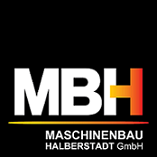The job of a pipe welder entails various functions. In the assembly of Generating sets different type of piping activities are required for different media. There are different systems that need to be connected to the main engine; cooling water, fuel (diesel or gas), lub.oil and pressurized air. The installation must be absolutely leak free because the media is hazardous for the environment.
The major duties, tasks, and responsibilities of the role:
- Assemble and install metal pipes and pipe fittings for stainless and carbon steel projects
- Use clamps, brackets, and hangers to secure pipes to structures
- Remove slags and rough spots from workpieces by operating grinders or scrapers to ensure smooth work surface
- Employ their knowledge of metallurgy to determine materials and equipment most suitable for a welding project
- Clean and prepare workpieces using chemical solutions etc. to remove foreign matter such as grease, rust etc.
- Use heating furnaces to preheat metal pipes prior to welding or bending
- Cut and shape metal components to set specifications using powersaws, chipping knives or other hand tools
- Cut, torch and weld metal surfaces using top of the line stick, TIG, MIG welders and plasma cutting systems.
- Fill holes, cracks, and dents on metal workpieces or pipe products
- Use micrometers, calipers and other precision measuring instruments to check gap allowances, grooves or angles
- Assemble metal and non-metal pipes and pipe fitting using threading machine
- Study schematics, diagrams, and blueprints in order to determine the layout of pipes
- Measure and fabricate pipe routings to match existing in-line piping systems
- Control and turn valves or regulators to adjust flames and ensure proper use of welding gas
- Wear appropriate protective gear and ensure compliance with established health/safety regulations
- Troubleshoot a piping system and conduct diagnosis to identify and fix pipe problems.

